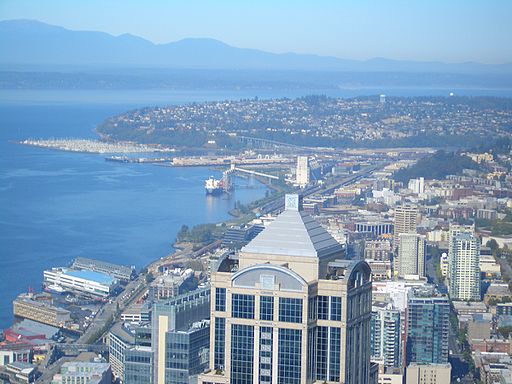
March 7, 2017; Seattle Times
Seattle is working to increase the maximum allowable height for buildings in two of its districts: downtown and South Lake Union. The move would trigger the city’s Mandatory Housing Affordability (MHA) program, already begun in the University District, an area the city council has decided to upzone.
The program aims to increase the number of rent-controlled housing units by 6,000 citywide over the next 10 years. In exchange for allowing an upzone in these two districts, Seattle will require housing developers and commercial developers to set aside two to five percent of their units and five to eleven percent of their floor space for rent-controlled housing, respectively. Should developers opt to not offer such housing, they will pay a per-square-foot fee, the proceeds of which will go to nonprofit developers of rent-controlled housing.
Should the city council decide to implement the MHA program, it will essentially act as a one-time tax on developers. Since space is scarce in the city, the revenues a developer could command in uncapped rents minus the one-time fee will likely exceed the lifetime of rent-controlled revenues. That means that developers will, all things equal, elect to pay the fee rather than build rent-controlled housing.
The article projects that a 44-story apartment building could generate $5 million in fees and that a 35-story commercial building could generate $7.8 million in fees. How much of that would go to nonprofits is tough to say, since there are always costs of transferring wealth from one party to another. That said, this should be a windfall for nonprofit developers.
Sign up for our free newsletters
Subscribe to NPQ's newsletters to have our top stories delivered directly to your inbox.
By signing up, you agree to our privacy policy and terms of use, and to receive messages from NPQ and our partners.
An important question to ask, though, is whether this program should be implemented. While rent-controlled housing sounds appealing, nearly all economists agree that it is a bad thing. It benefits people who already live in those rent-controlled units while hurting those looking for apartments. Acting as a price ceiling, rent control creates excess demand—more people want to rent at that price than are units available. There are a number of additional potential unintended consequences as well, including poor maintenance and tenant service. You can read more about them here.
That being said, Seattle is on to something here. One of the best ways to make housing more affordable is to allow for it to become more abundant. When demand remains constant and the supply of housing increases, the price will decrease, all things equal. The best way to make housing more abundant is to relax some of the zone regulations that force developers to cap the buildings in one direction or another. In this case, Seattle (and the city is not alone here) caps a building’s height. When land is scarce, like in major metropolitan areas for example, the lowest cost direction for developers to build is upward. Upzoning these parts of Seattle is a step in the right direction, even if the fees imposed on developers will end up reducing the quantity of units that they would build were they not in effect.
Now, as for nonprofit developers, most of the rent control literature examines for-profit enterprise. It could very well be that nonprofits would run better rent-controlled housing than a for-profit institution. The literature is far from conclusive about nonprofit quality relative to for-profit quality, but there is some reason for optimism. It likely will not do much to help with the excess demand, though.
All in all, if Seattle elects to enact the MHA program, it will likely lead to taller buildings, which means more housing. And it seems likely that those new buildings will lead to more money for nonprofit developers.—Sean Watterson












